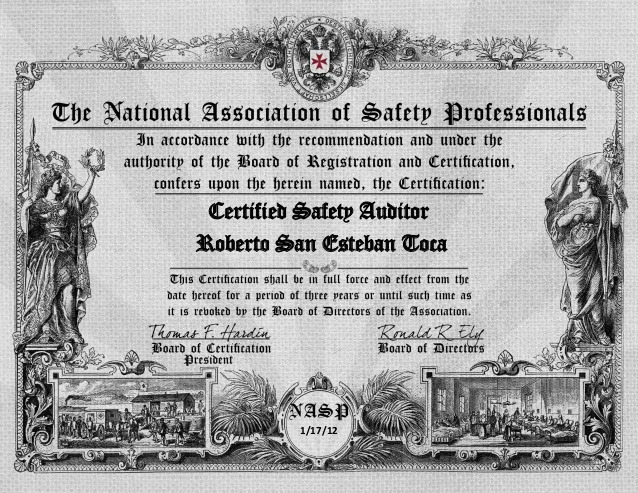Safety Auditor Certificate (SAC)
This is a thorough and comprehensive course. There is no more important skill for a safety professional than the ability to detect and correct hazards before they cause injury. This is the goal of the workplace safety auditor and his or her three primary tools, which are Hazard Analysis, Inspections, and Accident Investigation. A workplace safety audit seeks to identify circumstances, situations, equipment, or materials that could endanger a worker. The goal is not regulatory compliance or cost savings; it is the avoidance of human injury. Regulatory compliance and monetary gain are side effects, not the primary goal.
Accidents are unavoidably expensive. They cost money in terms of medical bills, insurance, lost wages, and a variety of other indirect costs. Regulatory compliance is another critical component of ensuring a safe workplace. However, there is no regulation that covers every hazard. In fact, OSHA addresses this issue by citing the General Duty Clause in situations where no specific standard applies and a worker could be injured. According to the General Duty Clause, "each employer shall provide to each of his employees employment and a place of employment free from recognized hazards that are causing or are likely to cause death or serious physical harm to his employees."
Consider yourself an investigator in the sense of a detective, searching for clues that indicate potential injury scenarios, rather than an auditor in the sense of a financial auditor. However, no matter how thorough you are in identifying hazards, this is only the first step. Make certain that any hazards you discover are addressed as soon as possible. For each hazard discovered, you must first attempt to eliminate it using Engineering Controls. If engineering controls cannot be used to eliminate or control the hazard, administrative controls must be used. Only if it can not be controlled by Engineering Controls or Administrative Controls may you use PPE as the remedy. Above all, remember that people will retain or lose life and limb based upon how well you perform the safety audit function.
Learning Objectives:
Upon successful completion of this topic, the student will have the knowledge, skills and abilities to:
- Understand and recognize the sequence of events that leads up to an accident.
- Know why incidents may not get reported and how to change a non-reporting culture.
- Write a comprehensive incident investigation program.
- Lead an incident investigation and apply the 4-step incident investigation process.
- Gather information pertinent to root cause analysis.
- Determine root cause through various techniques.
- Recommend and implement corrective actions to prevent similar future incidents
- Write an incident report.
- Recognize hazardous conditions in the workplace.
- Disseminate the types of injuries that can occur as consequences to hazardous conditions.
- Understand the Hierarchy of Hazard Control Measures and when to use them.
- Conduct a Job Hazard Analysis by using the six-step process.
- Calculate risk based on frequency, likelihood, and severity of hazards.
- Apply the concept of Acceptable Risk to the Residual Risk Reduction method of reducing hazardous conditions.
- Prioritize high-risk tasks to pro-actively eliminate hazardous conditions before they become injuries or illnesses.
- Understand the process hazard analysis method and apply its common techniques of What-If and HAZOP in the evaluation of processes with highly hazardous chemicals.
Website: naspweb.com/course/safety-auditor-certificate-sac/









